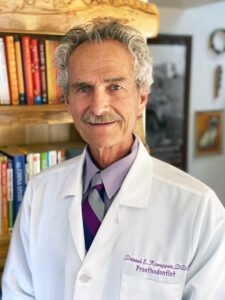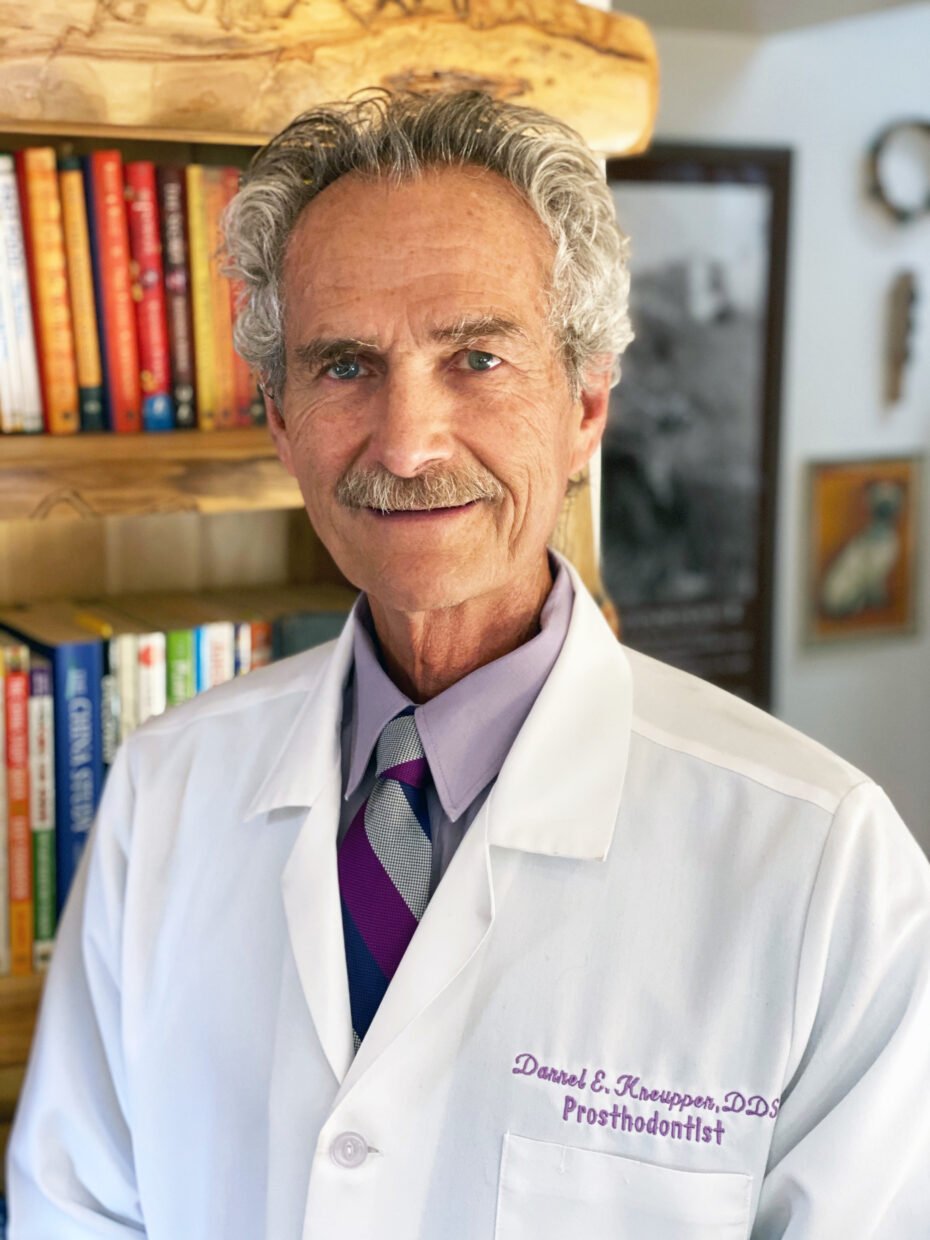 By Darrel Kneupper, D.D.S.
By Darrel Kneupper, D.D.S.
From the Fall 2020 Journal of the Colorado Dental Association
Without actually seeing her in person, I provided a new lower denture to my elderly patient who lost the lower denture I made her four years ago.
This is a strange time when we find ourselves in a situation where it is risky to work with all patients, especially those who are high risk for what could be a fatal bout with COVID-19. This past spring, emergency dental services involving pain resolution only was the prudent way to conduct ourselves. However, while survival is not dependent on teeth, quality of life issues and adequate nutrition concerns can be a valid consideration about what is really an “essential” dental service.
My patient, Elfie, 95, resides in a skilled-care nursing home. She lost her lower denture and was using an old set of dentures to get by. She called me just when the pandemic was making itself known and told me she was miserable with her lower denture. So, I decided to see her, considering she had done quite well with her dentures up until then. Upon seeing her, it was obvious she was using her old and dilapidated dentures. The lower denture had slipped into a pronounced under bite due to denture tooth wear and advanced ridge atrophy because they were made for her sometime last century. This resulted in a large mucosal ulceration on her prominent genial tubercle. While these sort of negative ridge forms can be challenging to fit dentures on comfortably, the trough form can provide effective lower denture support, provided the edges of the denture are compatible with surrounding muscle function. Thankfully, I was able to fit her previous lower denture using a permanent soft liner that she tolerated very well.
However, Elfie subsequently called about a month later to let me know that she couldn’t wear her old lower denture as it was too loose and was still causing her significant discomfort. I advised her that I could not access her facility to record the needed information to fabricate a new lower denture for her. She would have to do as well as she could with her old upper denture until health officials relaxed nursing home precautions.
Fortunately, I had kept her new upper denture, which she could no longer wear, to use to fast-track replacing the lost lower denture when the immediate pandemic concerns subsided, and funding could be arranged. She no longer had Medicaid benefits due to their strictly enforced seven-year replacement rule.
Her situation weighed on my mind and after much consideration, I decided to forego recording a fresh lower impression and new bite records and simply fabricated a new lower denture replacement using the four-year old records I had in storage. It seemed to be a better option than waiting until a more ideal, in-person opportunity would happen.
Since experience has taught me that this patient population is more prone to lose their dentures, I’ve been recording important design information about the anterior teeth with a silicone matrix and keep the master models along with their impression bases in model storage boxes. In the few times I’ve needed them, I usually transfer incisor positioning by pressing warm baseplate wax into the matrix with the models properly positioned on the articulator the dentures were made on and then clinically record a wash functional impression with a fresh application of tissue conditioner so the replacement denture can be delivered at the next visit. However, in this unfortunate predicament where multiple visits with risk/benefit being dubious, onsite visits were out of the question.
So, I fabricated my best-effort new lower denture with a permanent soft liner and all the important occlusal balance features essential to effective chewing and maximum wearing comfort. I delivered it, along with her newer upper denture, to the facility for them to place in service without risking seeing her in person. All things considered, I decided to waive the fee and consider it a pro-bono service since alternative funding sources wouldn’t cover services retroactively.
Happily, Elfie has done quite well with it, and she and her family have called several times to express how very pleased they are with what they describe as my “heroic act of kindness.” While that was a genuine warm and fuzzy response, I advised them that the real heroes are the facility staff who provide all the support services for those in need on a daily basis and who risk their own health and the health of their family to help others. We are fortunate to have brave, incredible, and tireless frontline hospital doctors, nurses, and first responders, in addition to food service and other essential workers who risk their health to care for the community.
While the circumstance may be unique, this truly was a “distance” denture service with a happy ending for all involved.
Dr. Darrel Kneupper is a prosthodontist in Colorado Springs, CO.


